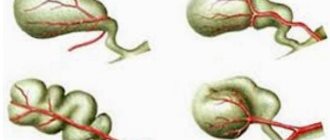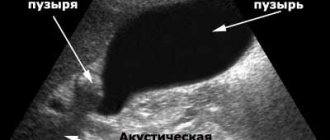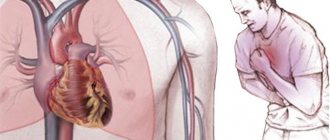The gallbladder is a bean-shaped organ that produces a special liquid - bile, which is involved in the digestion process and when this organ is affected by atypical cells, a disease occurs - gallbladder cancer.
Gallbladder cancer is a rare form of oncology, accounting for no more than 8% of all cancers. In this regard, doctors find it difficult to diagnose and treat this disease. Most often, the tumor is formed from the cells of the mucous membrane of the bladder itself, or from the cells of the neck of the bladder.
The disease mainly occurs in people aged 50 to 70 years, the majority of patients are women. The development of the oncological process in the gallbladder can be affected by poor nutrition, an unhealthy lifestyle, as well as diseases of the bile ducts, for example, stones that injure them.
In 74% of cases, gallbladder cancer develops against the background of cholelithiasis.
Leading clinics in Israel
Assuta
Israel, Tel Aviv
Ikhilov
Israel, Tel Aviv
Hadassah
Israel, Jerusalem
Factors that increase the risk of developing the disease include:
- Smoking and alcohol abuse;
- Professional activities associated with constant contact with heavy industrial products and carcinogens;
- Overweight;
- Being female;
- Mature age;
- The presence of stones in the bile ducts and chronic inflammatory processes (for example, cholecystitis);
- Accumulation of calcium salts in the walls of the gallbladder – calcification;
- Polyps in the gallbladder reaching a size of more than 1 centimeter;
- Helicobacter pylori infection, which increases the risk of cholelithiasis or cholecystitis;
- The presence of cystic formations in the ducts of the organ, causing stagnation of secreted bile. Since bile is to some extent a carcinogenic substance, its stagnation causes changes in the mucous membrane of the bile ducts - precancer;
- Poor diet with a predominance of fatty and carbohydrate foods;
- Fibrosis;
- Polycystic disease;
- Cirrhosis of the liver.
It should be emphasized that the above factors do not always provoke the development of the disease. But still, for the purpose of prevention, it is recommended to regularly visit a doctor and promptly remove all kinds of stones, polyps and treat cholecystitis.
Symptoms
At an early stage, the disease is asymptomatic. A malignant neoplasm is sometimes detected randomly after histological analysis of tissues taken during surgery for cholecystitis.
The manifestation of the first symptoms of gallbladder cancer at the first stage is characterized by the following nonspecific signs:
- General weakness;
- Nausea;
- Abnormal stool;
- Feeling of heaviness in the area of the right hypochondrium;
- Bloating;
- Weight loss.
The duration of the initial stage largely depends on the location of the tumor and how close the tumor is to the bile ducts. Localization of the primary focus in the body or tail of the pancreas prolongs the initial stage of the disease than the location of the tumor in the head.
Symptoms of gastrointestinal tract
The development of the neoplasm is accompanied by obstructive jaundice, which in turn occurs with a number of symptoms. It is these signs that indicate an advanced oncological process. Obstructive jaundice in gastric cancer is characterized by symptoms such as:
- Increased liver size;
- Skin itching;
- Dark urine;
- Light chair;
- Nausea, vomiting.
Blockage of the organ duct by a tumor causes dropsy, inflammation in the bile ducts, as well as secondary cirrhosis of the liver.
The development of a tumor with metastases to the liver can cause liver failure. Its symptoms are:
- Decreased physical activity;
- Lethargy;
- Slow mental perception.
A tumor of the gallbladder at the last stage causes ascites, carcinomatosis and general exhaustion of the body.
Symptoms of oncology of this organ
The main symptoms of gallbladder cancer are as follows:
Read also: How to prepare for an ultrasound of the gallbladder?
- yellowish tint of the skin and eye sclera;
- heaviness and pain in the right hypochondrium;
- a slight increase in temperature, which lasts for a long time and does not fall (in the later stages of the development of the disease it can reach 38 degrees);
- bowel disorders, in which alternating constipation and diarrhea occur;
- bitter taste in the mouth;
- nausea, turning into vomiting (especially after eating sour, fried and fatty foods);
- bloating;
- flatulence;
- heartburn;
- loss of appetite and, as a result, loss of body weight.
It is worth saying that similar symptoms are also typical for other pathologies of this internal organ (for example, cholecystitis or cholelithiasis), which makes it even more difficult to diagnose the oncological nature of the disease based on external signs.
Gallbladder cancer goes through the following stages in its development:
| № | Helpful information |
| 1 | Stage 0 – malignant cells are localized in the inner layer of this organ |
| 2 | I (first stage) – the formed cancer tumor extends beyond the inner layer |
| 3 | II (second stage) – the malignant neoplasm extends beyond the muscular walls of the gallbladder and cancer cells grow into the connective tissue |
| 4 | III (third) stage - the cancerous tumor affects part of the liver or radiates to other digestive organs |
| 5 | The last IV (fourth) stage - the tumor penetrates the main blood supply artery to the liver and the nearest nodes of the lymphatic system |
Stages of the disease
- Stage zero is characterized by damage to the inner wall of the organ by cancer cells, there are no signs of cancer;
- The disease in the first stage occurs with the formation of a small oval-shaped tumor, which develops on the wall of the organ, sometimes pressing deeper. The neoplasm is similar to polyps, but differs in accelerated growth. In turn, at the initial stage, cancer goes through 2 stages. In the first stage, the walls of the organ are affected - the internal and connective layers. At the second stage, cancer also affects the muscle fibers of the bladder;
- Gallbladder cancer of the second stage also develops in 2 stages. The first stage is characterized by malignancy of the visceral part of the abdominal cavity. After this, the tumor affects the pancreas, some parts of the intestines, the liver, and also the lymphatic vessels;
- The third stage of the disease is accompanied by tumor damage to the blood vessels of the liver. This allows the tumor to spread throughout the body;
- At the fourth stage of the disease, multiple metastases are observed in various organs and lymph nodes.
Causes and risk factors for gallbladder tumors
Until now, the causes of cancer are unknown. Some experts believe that genetic mutations are “to blame” for the appearance of atypical cells, while others believe that a person’s lifestyle is to blame. Any combination of several predisposing factors can be dangerous.
Risk factors for developing gallbladder cancer:
- heredity - if any of the family members had a history of cancer, then there is a likelihood of it occurring in future generations;
- chronic cholecystitis with exacerbations - inflammation provokes the formation of polyps, which tend to become malignant. Even a tumor in the form of a small polyp of the gallbladder can have unpredictable consequences;
- cholelithiasis - stones injure the wall of the bladder and ducts. In place of damaged cells, atypical ones may form;
- a combination of 2 and 3 conditions is a long-term gallstone disease, accompanied by symptoms of chronic bacterial cholecystitis. This is a particularly dangerous combination from the point of view of carcinogenesis;
- stagnation of bile caused by dyskinesia of the biliary tract of the hypokinetic type - occurs when the contractility of the duct wall is impaired;
- poor nutrition and constant errors in diet - excess fatty and carbohydrate foods disrupt the dynamics of bile outflow. A small amount of plant foods reduces intestinal motility and promotes biliary dyskinesia;
- concomitant pathology of the upper gastrointestinal tract - chronic gastritis with reflux, pancreatitis, duodenal ulcer;
- harmful chemicals and heavy metals - long-term observations confirm that metallurgy workers are more susceptible to the development of neoplasms in the gallbladder.
Tumor metastasis
Metastasis of a gallbladder tumor occurs as follows:
- The spread of secondary foci of oncology to nearby tissues - the liver, some parts of the intestines and the pancreas;
- Through lymphatic vessels, i.e. through lymph;
- Hematogenously - through blood.
Don't waste your time searching for inaccurate cancer treatment prices
*Only upon receipt of information about the patient’s disease, a representative of the clinic will be able to calculate the exact price for treatment.
Structure and functional features of the gallbladder
The gallbladder is a hollow, pear-shaped organ designed to accumulate and store bile produced by liver cells. Anatomically, it consists of a fundus, body and neck. Bile is removed through the cystic duct, which is a continuation of the neck of the bladder, and then into the common bile duct.
Topography of the organ
The gallbladder is located directly under the liver, more precisely under the right lobe. The bed of the gallbladder is made up of ligaments that attach it to the lower edge of the liver and hold it in a fixed position.
Regarding the bone structures, the gallbladder is located in the right hypochondrium, 2 cm to the right of the midclavicular line.
Functions of the gallbladder and bile:
- reservoir and “storage” - bile accumulates for the next portion of food;
- participation in the processing of nutrients, in particular, the emulsification of fats;
- activation of pancreatic enzymes to accelerate the breakdown of carbohydrates, proteins and lipids in the gastrointestinal tract;
- synchronization of the pancreas - along with bile, pancreatic enzymes are released into the lumen of the duodenum. This promotes timely and complete digestion;
- regulation of small intestinal motility. Chemical receptors of intestinal cells react to bile - the movement of food and absorption of nutrients begins.
How to identify cancer? Diagnosis of the disease
The diagnosis of gallbladder cancer is made using diagnostic methods such as:
- Ultrasound (also used for endoscopic and laparoscopic interventions);
- CT and MRI;
- Laparoscopy together with biopsy;
- Cholangiography of the ducts.
In a patient with gallbladder cancer, blood analysis reveals leukocytosis, impaired liver function, and an acceleration of the erythrocyte sedimentation rate.
Oncology is also diagnosed when the amount of carcinoembryonic antigen increases. Additional research methods are used to clarify the volume of the tumor, its location, and identify secondary foci of oncology. This allows the oncologist to determine the stage of the cancer and select the necessary treatment method.
Treatment methods for gallbladder cancer are selected depending on the stage of the disease, the prevalence of secondary metastases, and the age and well-being of the patient are also taken into account.
Treatment
Treatment of gallbladder cancer can be carried out using standard methods or new experimental methods that have not yet been studied to the required level . Any patient who has not started treatment can participate in clinical trials. Traditional medicine is also still used.
If we consider the standard methods of getting rid of gall cancer, then there are three of them:
- Surgical intervention.
The basis is cholecystectomy. In other words, the affected organ and the soft tissue around it are completely removed. In some cases, lymph nodes are removed. The operation is performed using a lactoscope.
- Radiation therapy.
It is based on getting rid of a malignant tumor using X-ray radiation. This method can completely destroy cancer cells or significantly slow down their growth. Radiation therapy is divided into external and internal. In the first case, the treatment device is located in close proximity to the patient's body. In the second, medical substances are introduced into the body through needles or catheters.
- Chemotherapy.
This method is prescribed for treatment at a late stage of the disease. It is based on the introduction of a cytostatic drug into the affected organism. It erases cancer cells and stops their growth. The medicine is taken orally or administered intramuscularly. When treating at a late stage of development, the drug is injected into the spinal canal or into the diseased organ itself.
How to treat gallbladder cancer?
Gallbladder cancer is often diagnosed immediately after the organ is removed due to stones present in it. In this case, the cancer does not extend beyond the boundaries of the organ and a conventional operation to remove the organ is sufficient. If the tumor extends beyond the gallbladder and spreads to nearby tissues, surgery may be prohibited due to the complex location of the tumor near the liver, pancreas, and intestines.
Still, the most effective treatment for gastric cancer is surgical excision of the tumor. Removal of the gallbladder - cholecystectomy is performed for localized forms of oncology. In some cases, areas of the liver, biliary tract, lymph node, as well as healthy tissue surrounding the tumor are also excised to avoid the spread of metastases.
An inoperable tumor forces doctors to provide palliative therapy aimed at maintaining satisfactory well-being of the cancer patient and alleviating pain. If necessary, tubes are installed in the ducts of the organ to drain bile.
A diet for gallbladder cancer can also improve the patient’s condition.
Radiation therapy for gastric cancer is rarely used, since the tumor is not sensitive to radiation. It is used as an additional therapy and in providing palliative care to the patient. Irradiation is carried out remotely and locally after inserting a catheter or needle with a radiopharmaceutical into the area where the tumor is located - brachytherapy.
What types of gallbladder tumors are there?
A tumor of the gallbladder can be benign or malignant. Such neoplasms are classified according to several criteria, namely:
- From a histological point of view:
- benign:
- hemangioma;
- adenoma;
- true cyst;
- fibroma;
- myxoma;
- papilloma;
- polyp;
- fibroxanthogranuloma;
- Leymyoma.
- malignant:
- epithelial cancer lesions (adenocarcinoma (the most commonly diagnosed cancer); solid cancer; mucinous cancer; hepatocellular carcinoma (also called hepatocellular carcinoma)); The closer the structure of pathological tissues is to normal, the simpler the treatment.
- malignant tumors arising from connective tissues (fibrotic cancer (scirrh) and sarcoma);
- parenchymal cancer (hepatoma, cholangioma, cholangiohepatoma);
- anaplastic cancer (represents the most malignant neoplasm in the biliary system, since it is characterized by rapid growth and metastasis, but is quite rare).
- according to the degree of damage to the gallbladder structures by atypical cells:
| № | Helpful information |
| 1 | superficial (only the mucous membrane is affected) |
| 2 | deep (the tumor penetrates the structure of the bladder wall or “spreads” along it, affecting several anatomical structures of the organ) |
| 3 | extending beyond the gallbladder (liver cells, nearby lymph nodes, small intestine and/or stomach are affected) |
| 4 | total (the tumor either by lymphogenous or hematogenous route extends beyond the organs described above) |
Read also: What to do if you have gallstones?
Forecast
Gallbladder cancer is a rare disease. If it is diagnosed in the early stages of development, the patient has a chance of complete recovery. Unfortunately, in most cases the tumor is detected in the last stages, when the prognosis is disappointing. This type of oncological process is difficult to diagnose due to the absence of pronounced symptoms.
Treatment will only be effective if the cancer has not spread to other structures. If secondary tumor foci spread to other organs, palliative care is used to improve the patient's condition.
How long do people live with gallbladder cancer? Life expectancy with gastric cancer depends on the stage and aggressiveness of the tumor. Survival rate for stage 0 disease is approximately 80%. The first stage allows for a 5-year survival rate in 50% of cases. At the second stage, this percentage drops to 25%. As for stages 3 and 4, only 10% of patients have a chance of 5-year survival.
There are no specific ways to prevent gallbladder cancer, but following basic rules will help reduce the likelihood of cancer. To do this, you need to control your weight, eat right, give up alcohol and smoking and lead an active lifestyle. If you suspect or have inflammatory processes and stones in the bladder, it is recommended to immediately seek help from a doctor.
Stages
Experts distinguish 4 stages of gallbladder cancer. Diagnostic methods and course of treatment directly depend on them. Let's list:
- Stage 0.
At this stage of development, unhealthy cells are formed inside the diseased organ. They are in “sleep” mode and can always be activated. Consequently, infection of neighboring, healthy soft tissues will occur.
- Stage 1.
At this stage, the formation of a malignant tumor begins. It can be divided into 1A and 1B.
1A is characterized by the initial stage of the lesion, in which the mucous membrane is damaged down to the connective tissue and muscle layer.
Stage 1B is more severe, with the pathology growing into the muscle layer of the affected organ, and the formation of metastases in the gallbladder may occur.
- Stage 2.
Here there is also a division into 2A and 2B.
2A is characterized by infection of the visceral peritoneum. Difficulties begin with the normal functioning of the liver, stomach, large and small intestines, and extrahepatic bile ducts.
2B is a more serious tissue damage. The formation grows beyond the areas of the mucous membrane, spreading to the connective layer and lymph nodes. At a later stage, the tumor may grow through the visceral peritoneum, to the liver, or nearby organs.
- Stage 3.
At this stage of development of the pathology, the tumor grows to the main blood vessel, near the located organs, and the lymph nodes are affected.
- Stage 4.
At this 4th stage, the degree of germination reaches serious proportions. All regional lymph nodes, all soft tissues and organs located in close proximity to the site of proliferation are affected.
When writing a treatment plan for a patient, the doctor divides 2 stages of development:
- Localized (stage 1)
- Inoperable (stage 2,3,4)
If a tumor metastasizes from an unhealthy organ to neighboring ones, then the pathology is considered unresectable, that is, it will not be possible to completely remove it surgically . There are exceptions - people who, in addition to the main organ, only have lymph nodes affected.











